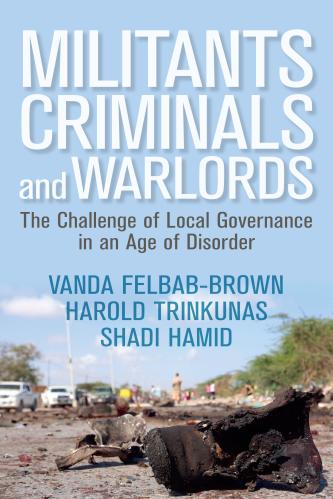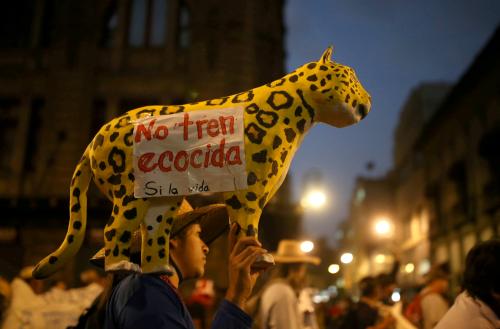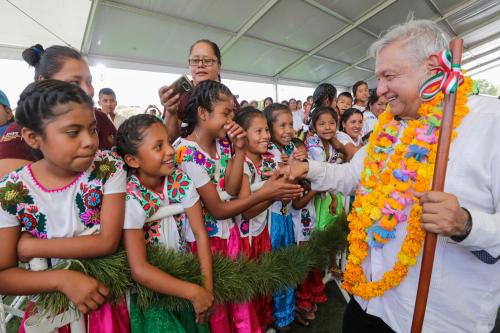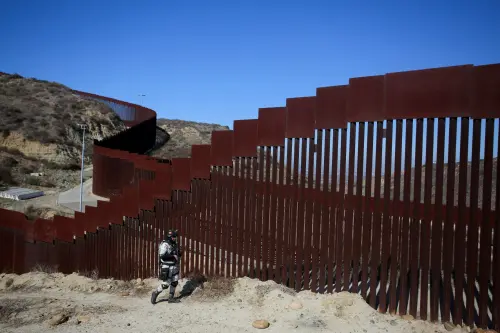COVID-19 highlights the urgent and continuing need for improving conditions in Mexican prisons, a massive problem long preceding the pandemic, writes Vanda Felbab-Brown. This piece was originally published by La Reforma’s Mexico Today.
As Mexico prepares to reopen during the escalating coronavirus (COVID-19) infection, with at least 60,000 confirmed cases and over 6,500 deaths as of May 22, its challenge in Mexican prisons is not going away. If the United States is any guide, COVID-19 can persist at high levels in prisons long after it begins to subside elsewhere. That poses grave risks not only prisoners but also to larger communities as corrections officers and relatives interact with prisoners. COVID-19 highlights the urgent and continuing need for improving conditions in Mexican prisons — a massive problem long preceding the pandemic. 210,991 people are imprisoned in Mexico’s 19 federal prisons and 309 state prisons.
In the first third of May, there were 93 confirmed cases of COVID-19 in Mexican prisons, 77 suspected cases and 8 COVID-19 deaths, including of the notorious Zeta leader Moisés Escamilla May. Those numbers are likely vast underestimates. Far worse is likely to come. COVID-19 has swept through U.S. corrections facilities, many of which are overcrowded, but otherwise feature much better conditions: For example, in California’s Chino facility, nearly two thirds of the more than 900 inmates tested positive for COVID-19. Overall in U.S. federal prisons, 70% of those tested were infected.
Conditions in Mexican prisons are poor. Many are run by criminal organizations. Breakouts from prison have been frequent: The escapes include not only Mexico’s top drug trafficker Joaquín “El Chapo” Guzmán, but also mass breakouts, in one case in 2012 of 132 Zetas! Worse yet, even from within prison, criminal gangs continue directing crime, including murders, and even go in and out of prison to commit murders, some prisons, such as in Chihuahua, managed to improve control and obtain international accreditation. in addition to engaging in bloody warfare inside prisons. With U.S. assistance, some prisons, such as in Chihuahua, managed to improve control and obtain international accreditation; but the strengthening of control has, reportedly, also featured significant human rights and legal abuses by the prison authorities.
Mexican prisons are notoriously overcrowded: 46% of the imprisoned share their cell with at least five other inmates; 13% with more than 15. They lack adequate food, water, hygienic facilities, and health care. To obtain daily necessities, many prisoners depend on relatives to bring them food, toiletries, and money to purchase essentials, including water: In theory, water should be provided free, but in practice, it is monetized along with other commodities and aspects of life within the large illicit economy that dominates Mexican prisons. Thus, when Mexican authorities cancelled prison visits to prevent COVID-19 spread, many prisoners’ access to subsistence declined dramatically. Although Mexican authorities claimed to have responded by providing extra sanitizers and cleaning supplies and in some cases allowing monitored video calls between prisoners and relatives, these provisions have not adequately compensated for the loss of money to buy food and water. In one case, prisoners rioted.
With similar conditions, various countries have resorted to large releases of prisoners, even if only on a temporary basis. Iran has temporarily released 70,000 prisoners; Afghanistan 10,000. In April, the State of Mexico (Edomex) planned on releasing 1,894 inmates for COVID-19 reasons, including those close to sentence completion, the elderly, and in ill health.
The long-awaited Amnesty Law that went into effect on April 23 provides further important opportunities for releasing prisoners. The amnesty proposal was a key element of the electoral campaign of Andrés Manuel López Obrador (AMLO) and of his security strategy once he assumed presidency. The law allows the release of those imprisoned for minor offenses such as abortion, and theft without violence and a sentence of less than four years, also of indigenous people who lacked translator during the court process. Many of these people should never have been imprisoned. Although AMLO has presented amnesty as a tool against organized crime and violence, the law will not significantly reduce either. Under the best of circumstances, it could slightly reduce the immense recruiting pool of Mexican criminal groups. Importantly, it is not an abdication of rule of law to criminal groups. But it will benefit only a small fraction of Mexican prisoners, perhaps 6,200, 3% of Mexico’s prison population.
Unfortunately, the amnesty will not be applicable to many imprisoned women who have their young children with them, as many of them are imprisoned for far more serious charges, such as kidnapping. How to deal with the children in prison — 700 under the age of six — is a thorny issue. Because of COVID-19, Mexican authorities sought to remove the children from prison removed and hand them to their relatives. But the imprisoned mothers objected, as did prison advocacy NGOs. Child health experts have emphasized that separating young children from a mother or a parent is one of the most damaging issues that can afflict a child. Rather rather than establishing an overall policy, each case should be judged on its own terms: Issues to consider include whether a child outside of prison (possibly with relatives also involved in crime) would have better or worse parental care and access to food and health care. While COVID-19 poses health risks to young children, the incidence of serious complications appears lower than in older adults.
Imprisoned mothers should be given a strong agency in making in the decisions. In these cases and others, Mexico can move toward at least temporary releases by employing electronic tracking bracelets. Mexico should also avoid stuffing its prisons with those who don’t need to be imprisoned — even before COVID-19, the AMLO administration’s decision to expand preventative detention was wrong! While dealing with many challenging issues and a devastated Mexican economy, the Mexican government at all levels must not take its eye of continuing prison reform.
The Brookings Institution is committed to quality, independence, and impact.
We are supported by a diverse array of funders. In line with our values and policies, each Brookings publication represents the sole views of its author(s).








Commentary
Mexico’s prisons, COVID-19, and the amnesty law
May 22, 2020